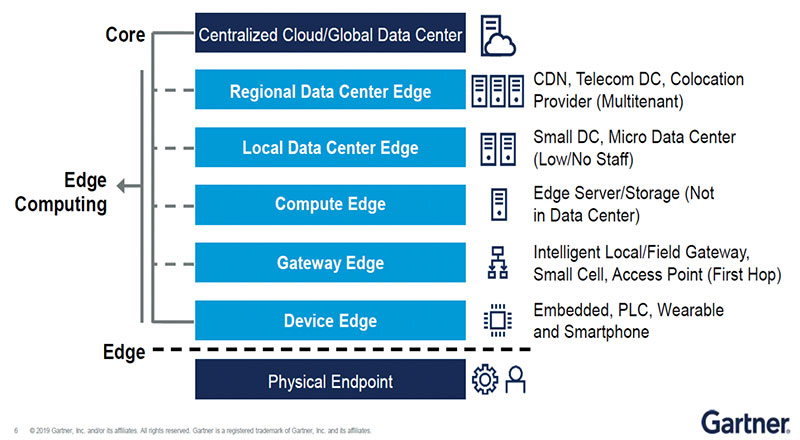October 2020, Vol. 247, No. 10
Features
Pipelines of the Future Through Digitalization
By Cori Allemand, Stratus Technologies
Digitalization and industrial IoT (IIoT) are major disruptive trends. Both will reshape how industries and companies conduct business and manage their assets in the future. Many consulting groups note that the 2020s will be the decade of IIoT adoption across all industries, including the midstream oil and gas industry.
Industrial digitalization deeply integrates innovative technology advancements, data management and analytical capabilities to improve enterprise and industrial asset management.
Recently, a flood of IIoT management platforms have been introduced supporting the collection of data that can be used to make informed industrial operations decisions. Corporate leadership teams are increasingly looking to adopt IIoT solutions to lower the cost of operations, be more agile in a competitive environment and be more responsive to changing business conditions.
Midstream oil and gas companies have assembled and stored pipeline operations data for many years. IIoT and digitalization innovations give midstream oil and gas pipeline operators greater capabilities to gather and analyze ever-growing volumes of data, and to act upon insights gained from that data to manage their infrastructure effectively and efficiently.
Digitalization is the use of technologies to collect, process and analyze data in near real time to provide value-producing and cost-saving opportunities. These digitalization tools give oil and gas pipeline operators visibility across the entire midstream infrastructure allowing them to remotely monitor pipeline conditions, equipment health (availability) and more.
Digitalization tools thus avoid challenges centered on how to translate numerous real-time data points into usable information that can be acted upon in a timely manner. These solutions remedy latency problems of the past that seriously affected pipeline operators’ abilities to take appropriate corrective actions in near real time.
Edge computing is a distributed computing environment that is located outside of the traditional data center. In the midstream oil and gas segment, it is the infrastructure that provides computing capacity and data storage to the pipeline equipment and machinery where it is needed.
Computing devices at the edge will also typically secure the machinery and equipment it controls.
As illustrated in Figure 1, edge computing is ideal for real-time data collection, analytics and industrial asset management. Edge computing hardware collects equipment data locally and can act upon that data locally, reducing latency concerns. Data can also be accessed remotely or be sent to the data center.
A well-managed edge computing infrastructure will use digitalized IIoT platform solutions to gather and analyze data from industrial equipment and machinery to make informed decisions keeping industrial operations running efficiently and effectively.
For midstream oil and gas, knowledge at the asset level is critical for various operations, such as:
- Terminal/pipeline operations and control
- Critical equipment condition monitoring
- Predictive (planned) maintenance
- Health, safety and environment (HSE) management: prevention of unplanned shutdowns, leaks, equipment failures and more
Midstream oil and gas companies have assembled and stored pipeline operations data for many years. IIoT and digitalization innovations give midstream oil and gas pipeline operators greater capabilities to gather and analyze ever-growing volumes of data, and to act upon insights gained from that data to manage their infrastructure effectively and efficiently.
Today, Tomorrow
Failure in industrial digitalization projects is largely attributed to a lack of understanding of how to apply a digital program to a particular operation. Incomplete knowledge about edge computing, industrial management platforms and limited in-house expertise often stall such projects at conception and end further development. In 2019, an estimated 70% of digitalization projects failed to achieve stated goals.
Before selecting a vendor or technology to implement a pipeline management program, midstream companies must develop a living strategic plan that balances the requirements of present operations and includes manageable guidelines.
Simple, redundant types of equipment and functions are used in pipeline and terminal operations. All are capital investments with operating and maintenance costs. In designing the digitalization/edge computing projects, engineers must carefully consider the total lifecycle costs of the devices and software. New advancements in software and hardware are occurring at an increasing rate. Future-proofing the design ensures the flexibility to deploy software patches and updates quickly and efficiently. For pipeline applications, deploying easy-to-commission updates remotely and across several sites is a huge value consideration.
Autonomous. Midstream operations and assets are located thousands of miles apart. Edge architecture must be reliable and rugged to operate in various open environments.
“Zero touch” technology is needed to monitor and control remote assets; having personnel on-site is not possible. The critical edge computing platform must be self-monitoring and self-healing should problems occur.
Protected. As more machinery and equipment is connected in the field, security and cyberattack prevention are major criteria. The supporting edge computing platform should incorporate redundant architecture to minimize any interruption by a single point of failure. Lost or unavailable data hinders decision-making. Real-time notification of conditions unfolding in the field, such as power supply interruptions, pipe integrity failures, critical equipment failures or unavailability, can be the difference between a slight setback or a full product release/leak/HSE accident.
Future-Proofing Operations
Looking forward, oil and gas companies need to build an industrial digitalization strategy. For long-term sustainability, the plan should be a living approach that balances operational requirements within manageable guidelines.
Midstream companies should invest in technologies that automate data management and governance at the edge as much as possible.
Partnering with Stratus Technologies ensures a successful industrial digitalization project that is sustainable and profitable in the long term while protecting data, people and valuable midstream assets.







Comments